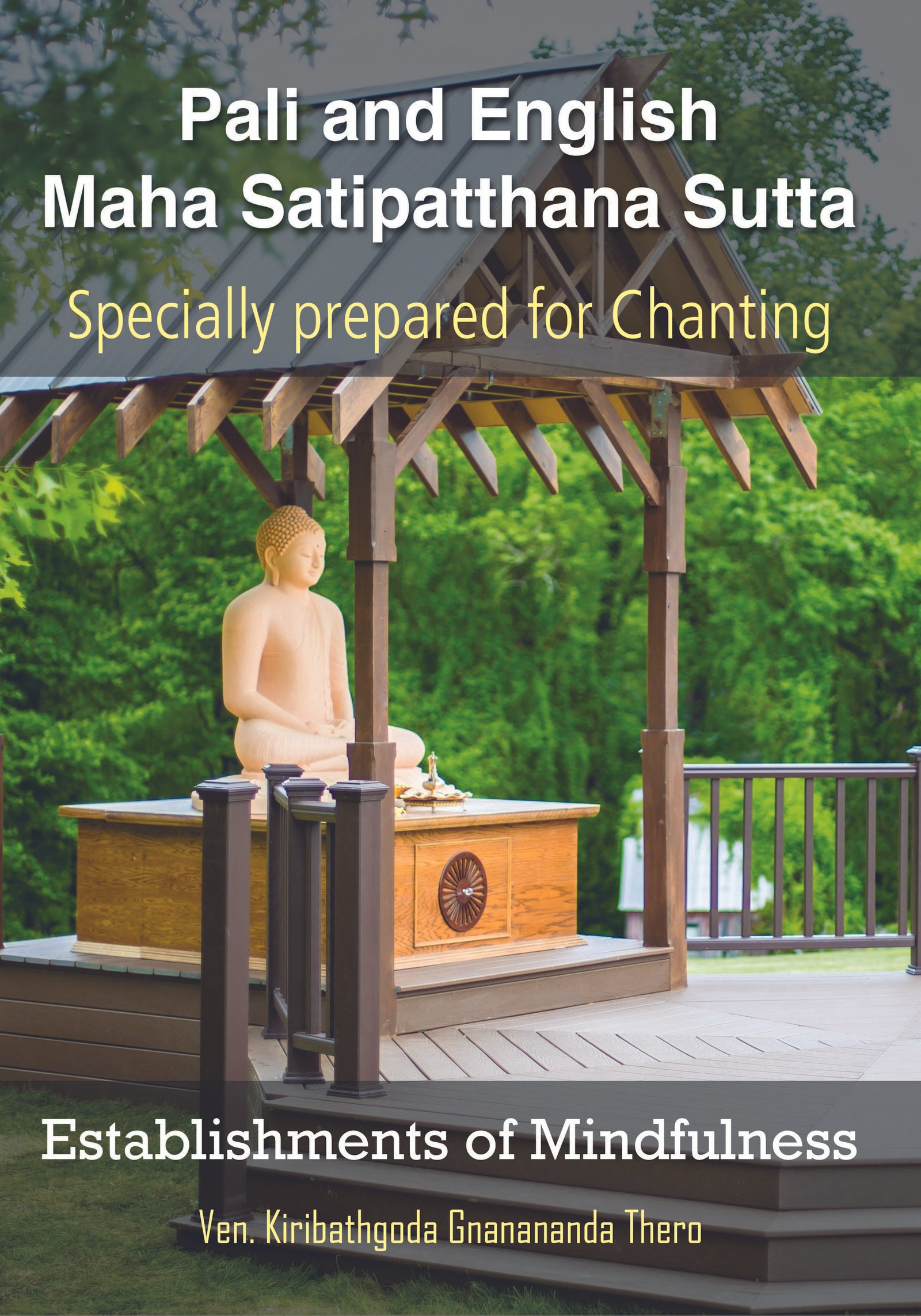1. Kāyānupassanā:
The Observation of Body
1.2. Iriyāpatha Pabbaṁ: Section on Postures
Puna ca paraṁ bhikkhave bhikkhu/ gacchanto vā gacchāmīti pajānāti./ Ṭhito vā ṭhitomhīti pajānāti./ Nisinno vā nisinnomhīti pajānāti./ Sayāno vā sayānomhī ti pajānāti./ Yathā yathā vā panasasa kāyo paṇihito hoti./ Tathā tathā naṁ pajānāti./
“Again, monks, when walking, a monk understands: • ‘I am walking.’ When standing, he understands: • ‘I am standing.’ When sitting, he understands: ‘I am sitting.’ When lying down, he understands: • ‘I am lying down.’ And he understands accordingly however his body is placed.
Iti ajjhattaṁ vā kāye kāyānupassī viharati./ Bahiddhā vā kāye kāyānupassī viharati./ Ajjhatta bahiddhā vā kāye kāyānupassī viharati./
“In this way he dwells contemplating his own body, • he dwells contemplating others’ bodies, • and he dwells contemplating both his and others’ bodies.
Samudaya dhammānupassī vā kāyasmiṁ viharati./ Vaya dhammānupassī vā kāyasmiṁ viharati./ Samudaya vaya dhammānupassī vā kāyasmiṁ viharati./
“He dwells contemplating the arising of the body, • he dwells contemplating the passing away of the body, • and he dwells contemplating the arising and passing away of the body.
Atthi kāyo’ti vā panassa sati paccupaṭṭhitā hoti./ Yāvadeva ñāṇa mattāya, patissati mattāya,/ anissito ca viharati./ Na ca kiñci loke upādiyati./
“Mindfulness, that there is a body • is simply established in him • to the extent necessary for higher knowledge and mindfulness. He dwells independent, and not clinging to anything in the world.
Evampi kho bhikkhave bhikkhu / kāye kāyānupassī viharati./
That is how monks, a monk dwells contemplating the body in body.
- Uddeso: Introduction
- 1. Kāyānupassanā: The Observation of Body
- 1.1 Ānāpāna Pabbaṁ: Section on Breathing
- 1.2. Iriyāpatha Pabbaṁ: Section on Postures
- 1.3 Sampajañña Pabbaṁ: Section on Clear Comprehension
- 1.4 Paṭikūlamanasikāra Pabbaṁ: Section on Repulsiveness
- 1.5 Dhātumanasikāra Pabbaṁ: Reflections on the Elements
- 1.6 Navasīvathika Pabbaṁ: Nine Charnel-Ground Contemplations
- 2. Vedanānupassanā: Contemplation of Feeling
- 3. Cittānupassanā: Contemplation of Mind
- 4. Dhammānupassanā: Contemplation of Phenomena
- 4.1 Nīvaraṇa Pabbaṁ: Section on the Hindrances
- 4.2 Khandha Pabbaṁ: Section on the Aggregates
- 4.3 Āyatana Pabbaṁ: Section on the Sense Bases
- 4.4 Bojjhanga Pabbaṁ: Section on the Factors of Enlightenment
- 4.5 Sacca Pabbaṁ: Section on the Four Noble Truths
- Satipaṭṭhāna Bhāvanānisaṁso: The Results of the Establishing of Mindfulness

Learn how to purchase on the main book page.




















Leave A Comment